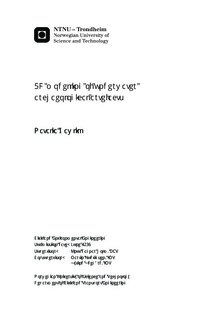| dc.contributor.advisor | Holm, Knut Ragnar | nb_NO |
| dc.contributor.advisor | Ludvigsen, Martin | nb_NO |
| dc.contributor.advisor | Odegård, Oyvind | nb_NO |
| dc.contributor.author | Gawlik, Natalia | nb_NO |
| dc.date.accessioned | 2014-12-19T11:34:02Z | |
| dc.date.available | 2014-12-19T11:34:02Z | |
| dc.date.created | 2014-09-11 | nb_NO |
| dc.date.issued | 2014 | nb_NO |
| dc.identifier | 746156 | nb_NO |
| dc.identifier | ntnudaim:11893 | nb_NO |
| dc.identifier.uri | http://hdl.handle.net/11250/233084 | |
| dc.description.abstract | Underwater photogrammetry is a good alternative to traditional archaeological excavations, which are often less accurate and very destructive to underwater artefacts Furthermore the photogrammetric principles applied with the Remotely Operated Vehicles allows us to explore objects that are at very great depths. For this thesis proposes a stereo camera system unit was designed in order to extract three-dimensional data from digital images. This stereo system unit consists of two cameras, two camera housings and a stereo bar mounted on a pan/tilt unit. Relative positions between these two cameras will provide us the external orientation data and in consequence it might solve the problem caused by the lack of ground control data on the underwater site.This master thesis also gives an insight into some of the mathematical background of photogrammetry, especially an influence on the intrinsic camera parameters caused by the air-glass-water interface is described. The underwater images are dark, murky and of poor quality due to a difficult conditions under water. In order to improve the perception of the underwater images a script based on histogram stretching of a few colour models are proposed. The primary subject of this thesis was a 3D modelling of the underwater shipwreck believed to be Den Waagende Thrane (The Waking Crane), which sunk in the Trondheim harbour in 1713. However due to technical problems this particular measurement has not been performed. Two other underwater objects were surveyed from the offshore based on the previously prepared data acquisition plans. In result a few three-dimensional models were created using different settings and a detailed analysis of the quality and utility of these models were conducted. | nb_NO |
| dc.language | eng | nb_NO |
| dc.publisher | Institutt for bygg, anlegg og transport | nb_NO |
| dc.title | 3D modelling of underwater archaeological artefacts | nb_NO |
| dc.type | Master thesis | nb_NO |
| dc.source.pagenumber | 95 | nb_NO |
| dc.contributor.department | Norges teknisk-naturvitenskapelige universitet, Fakultet for ingeniørvitenskap og teknologi, Institutt for bygg, anlegg og transport | nb_NO |

